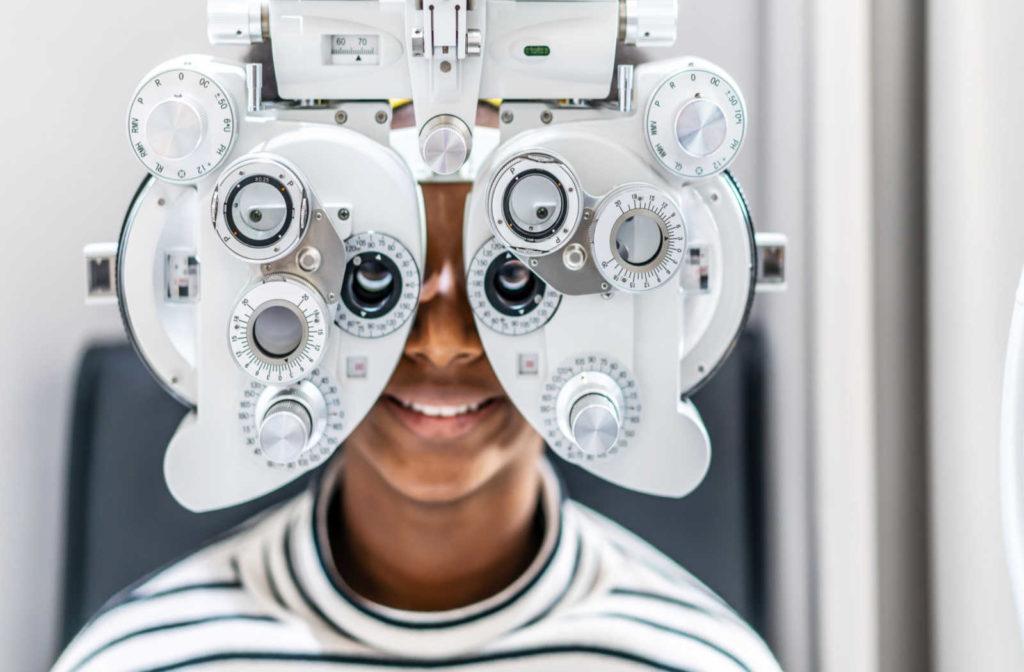Discovering the most up to date Technical Innovations in Optometry and What They Mean for Eye Doctors
From the precision of Optical Comprehensibility Tomography to the nuanced understandings supplied by AI-driven diagnostic tools, these technologies are setting brand-new requirements in client assessment and treatment. As these advancements permeate the technique, optometrists are encountered with the difficulty of embracing these devices to improve individual outcomes.
Innovations in Diagnostic Devices
Advancing the field of optometry, technologies in diagnostic devices have revolutionized the way eye treatment professionals examine and diagnose aesthetic problems and eye conditions. The past decade has actually witnessed considerable technological innovations, making it possible for even more comprehensive and accurate examinations.
An additional secret innovation is the intro of sophisticated corneal topography systems, which map the surface curvature of the cornea with accuracy. These devices are particularly helpful for fitting get in touch with lenses and identifying corneal problems. Electronic retinal imaging has actually transformed traditional ophthalmoscopy, providing comprehensive, panoramic views of the retina that assist in comprehensive aesthetic evaluations.
The growth of wavefront aberrometry has also been important, making it possible for the evaluation of refractive mistakes with unequaled precision (Eye Doctor Optometrist). This technology helps in personalizing restorative lenses and enhancing surgical results for refractive surgical procedures. Jointly, these analysis advancements equip eye doctors to deliver premium individual care, guaranteeing very early intervention and tailored treatment strategies, eventually improving visual health and wellness outcomes
AI in Patient Monitoring
Structure on the structure of cutting-edge diagnostic tools, the incorporation of man-made intelligence (AI) in individual monitoring stands for a transformative jump for optometry. AI systems are increasingly employed to enhance performance, accuracy, and personalization in individual treatment.
Moreover, AI-driven systems assist in structured individual communications and management procedures. Automated organizing, digital appointments, and individualized follow-up strategies not just enhance patient contentment but additionally maximize time monitoring for experts. These systems can triage patients based on the seriousness of their problems, ensuring that those in vital demand receive timely attention.
Additionally, AI boosts decision-making by offering optometrists with evidence-based suggestions and treatment paths. By incorporating information from electronic health documents, AI tools use understandings that inform professional choices, reducing the threat of mistakes and enhancing patient results. As AI remains to evolve, its role in person administration will likely broaden, improving the landscape of optometric care.
Advancements in Retinal Imaging
In the world of optometry, retinal imaging has actually witnessed exceptional technological developments that are improving diagnostic capabilities and patient care. Advancements such as Optical Coherence Tomography (OCT) and fundus photography have actually transformed exactly how eye doctors examine the retina and imagine.
Enhanced imaging techniques like OCT angiography are further refining analysis accuracy. Eye Doctor Optometrist. Such developments facilitate the identification of min retinal adjustments that can represent condition development.
In addition, developments in fabricated intelligence are enhancing retinal imaging by making it possible for automated analysis of big datasets. These systems help this page eye doctors in identifying patterns about his a sign of pathology, therefore improving analysis precision and efficiency. Collectively, these advancements are changing retinal imaging into a foundation of modern-day eye treatment, improving outcomes and broadening healing possibilities.
Teleoptometry's Expanding Duty
Teleoptometry is increasingly ending up being a vital part of eye care, driven by innovations in data and analysis devices. As optometry accepts digital improvement, teleoptometry helps with remote appointments, permitting optometrists to prolong their services beyond conventional limits. This is especially advantageous in underserved and country areas where access to specialized eye care is usually limited. By leveraging high-resolution video conferencing and advanced retinal imaging, optometrists can conduct extensive eye examinations from afar, guaranteeing prompt medical diagnosis and therapy.
The assimilation of expert system (AI) additional enhances teleoptometry, making it possible for the evaluation of visual information and helping in the detection of eye problems such as glaucoma and diabetic person retinopathy. AI-powered algorithms can swiftly translate complicated imaging data, giving eye doctors with useful insights that reinforce medical decision-making.
Additionally, teleoptometry sustains connection of care with smooth integration with digital health records (EHRs), permitting eye doctors to maintain extensive individual backgrounds. This guarantees that individuals receive customized and regular care also when seeking advice from different experts.
Despite these advantages, obstacles remain, consisting of making certain data protection and handling person expectations. Teleoptometry stands for a significant stride in the direction of more accessible, efficient, and patient-centered eye care. As technology advances, its function is positioned to broaden even more.

Future Trends in Eye Treatment
A myriad of cutting-edge trends is readied to improve the future of eye care, driven by technical advancements and the advancing demands of clients. One substantial pattern is the combination of expert system (AI) in diagnostics, which guarantees to improve the accuracy and efficiency of eye assessments. AI formulas can evaluate vast quantities of information from retinal pictures, possibly finding conditions like diabetic retinopathy and glaucoma earlier than conventional methods.
Furthermore, individualized medicine is gaining grip in optometry, with hereditary screening notifying tailored therapy strategies. This method intends to enhance person results by tailoring treatments to private hereditary profiles. Wearable modern technology, such as smart get in touch with lenses, is additionally on the horizon, using real-time surveillance of intraocular stress or glucose degrees, thus providing constant understandings into systemic and eye health.
The fostering of augmented fact (AR) and you can find out more online reality (VIRTUAL REALITY) in training and client education and learning is one more arising trend. These innovations provide immersive experiences that can improve understanding and skills both for optometrists and individuals. As these patterns progress, eye doctors need to remain abreast of technical developments to supply advanced treatment, ensuring better patient results and satisfaction in the dynamic landscape of eye treatment.
Conclusion

Jointly, these diagnostic developments empower eye doctors to provide premium person treatment, making certain very early treatment and tailored treatment methods, eventually enhancing visual health results.

As these modern technologies continue to develop, optometrists must adapt and incorporate them right into method, eventually enhancing operations performance and boosting the requirement of eye treatment supplied to individuals.